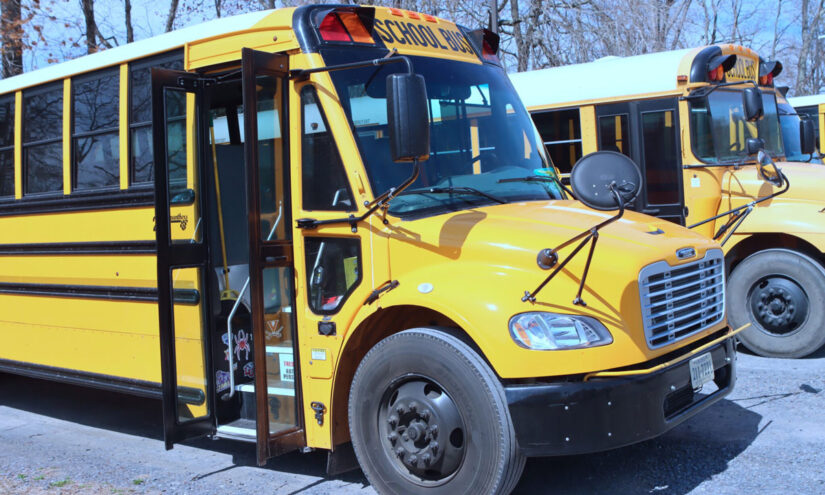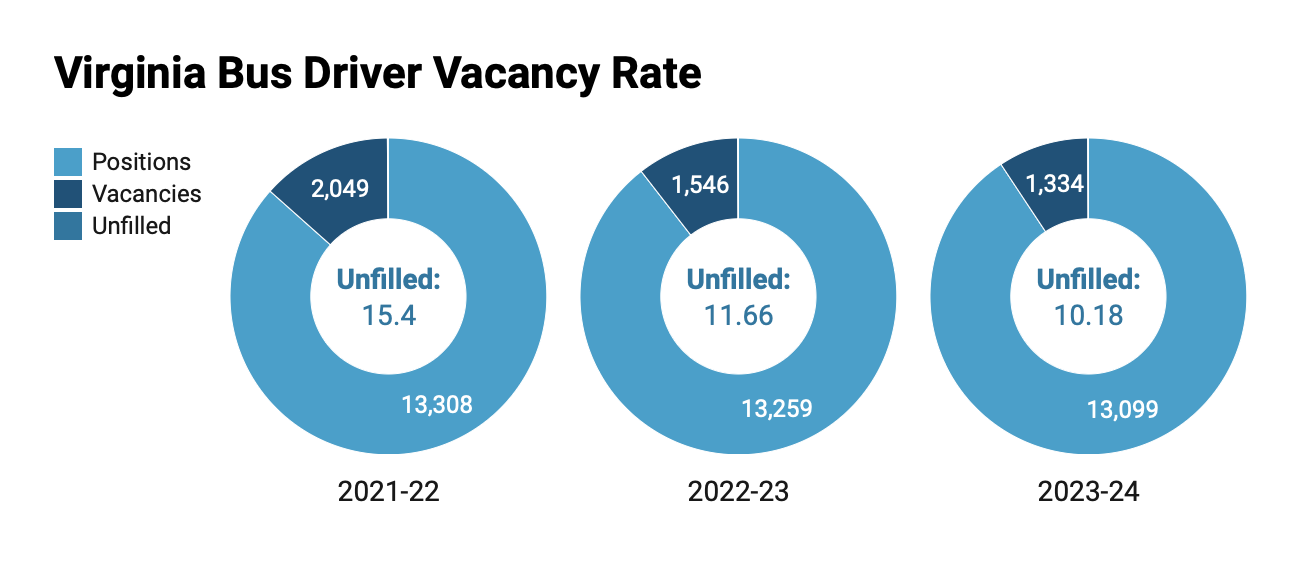Reflecting on the tenets that shape our educational practices is fundamental for …
Virginia’s School Bus Driver Shortage Rate Improves
Carlos Changemaker

Virginia’s school bus driver vacancy rate has dropped by five percent in the last three school years, as per the Virginia Department of Education.
Following changes in reporting requirements by the legislature, the agency started gathering data on bus driver vacancies two years ago. Factors like pay, recruitment challenges, and drivers exiting for the private sector contributed to the shortage of bus drivers.

Moreover, with schools closing for in-person classes, some drivers had to explore other means to address the rising expenses of services and goods due to inflation, which burdened families in Virginia.
For the 2021-22 academic year, Virginia saw a 16% vacancy rate for both full- and part-time bus drivers. This rate declined to 11% in 2022-23 and further decreased to 10% last year. Data on the forthcoming school year’s driver vacancies will only be available in the fall.
“It’s positive news,” stated Scott Brabrand, the executive director of the Virginia Association of School Superintendents.
He mentioned that superintendents across the commonwealth have been actively addressing the shortage by providing bonuses and boosting bus driver salaries.
Schools in Virginia found innovative ways to transport students during the bus driver shortfall, such as adjusting routes, increasing student capacity per bus, and utilizing car and van services. Some communities even initiated programs to encourage walking to school.
The state legislature made efforts to combat the shortage in recent times.
Last year, the General Assembly approved legislation introduced by Del. Carrie Coyner, R-Chesterfield, and Sen. Louise Lucas, D-Portsmouth, to shorten the period during which retired drivers with a minimum of 25 years of service could return to work without risking their pension benefits.
In a separate initiative, Sen. Todd Pillion, R-Abington, and Del. Israel O’Quinn, R-Washington, raised awareness about retirement benefits for teachers who double as bus drivers. Following this year’s session, the Virginia Retirement System clarified that eligible teachers who drive buses would receive compensation upon retirement.
As per the agency’s employer manual, VRS-participating school divisions have the authority to merge the job responsibilities of two positions under a single contract, provided that one of them is a covered position.
“It is immensely advantageous for teachers,” stated Washington County Public Schools Superintendent Keith Perrigan.
Experts argue that transportation plays a vital role in ensuring children attend school regularly, reducing high absence rates, and addressing the increased learning gaps worsened by the pandemic.
Perrigan, who is part of the state’s task force on reducing absences, mentioned that a few school divisions he represents in the Coalition of Small and Rural Schools of Virginia are commencing the school year with a full driver staff, unlike past years.
“Much of rural Virginia, especially Southwest Virginia, is making strides in this regard. While there’s still work to be done, we are a bit relieved regarding the bus driver shortage,” Perrigan expressed.
According to Perrigan, seven teachers in Washington County will split their time between teaching and driving students, while over 20 will do the same in Buchanan County.
Rappahannock County faced driver shortages last year. Nevertheless, Shannon Grimsley, superintendent of Rappahannock schools, confirmed that the school division now has a complete driver staff and substitute drivers available.
This development follows Grimsley’s decision to become a part-time bus driver to ease transportation challenges for students and encourage others to join as drivers. The focus now is on covering the costs of replacing aging buses, another transportation hurdle faced by some districts.
“We are collaborating creatively with the county government on our bus replacement schedule to ensure our fleet is properly maintained and meets all operational standards,” Grimsley stated.
She noted that bus costs have surged significantly, and the impact on rural school districts with limited state funding can pose challenges. In her district, bus costs have surged by over 63% over the past five years.



